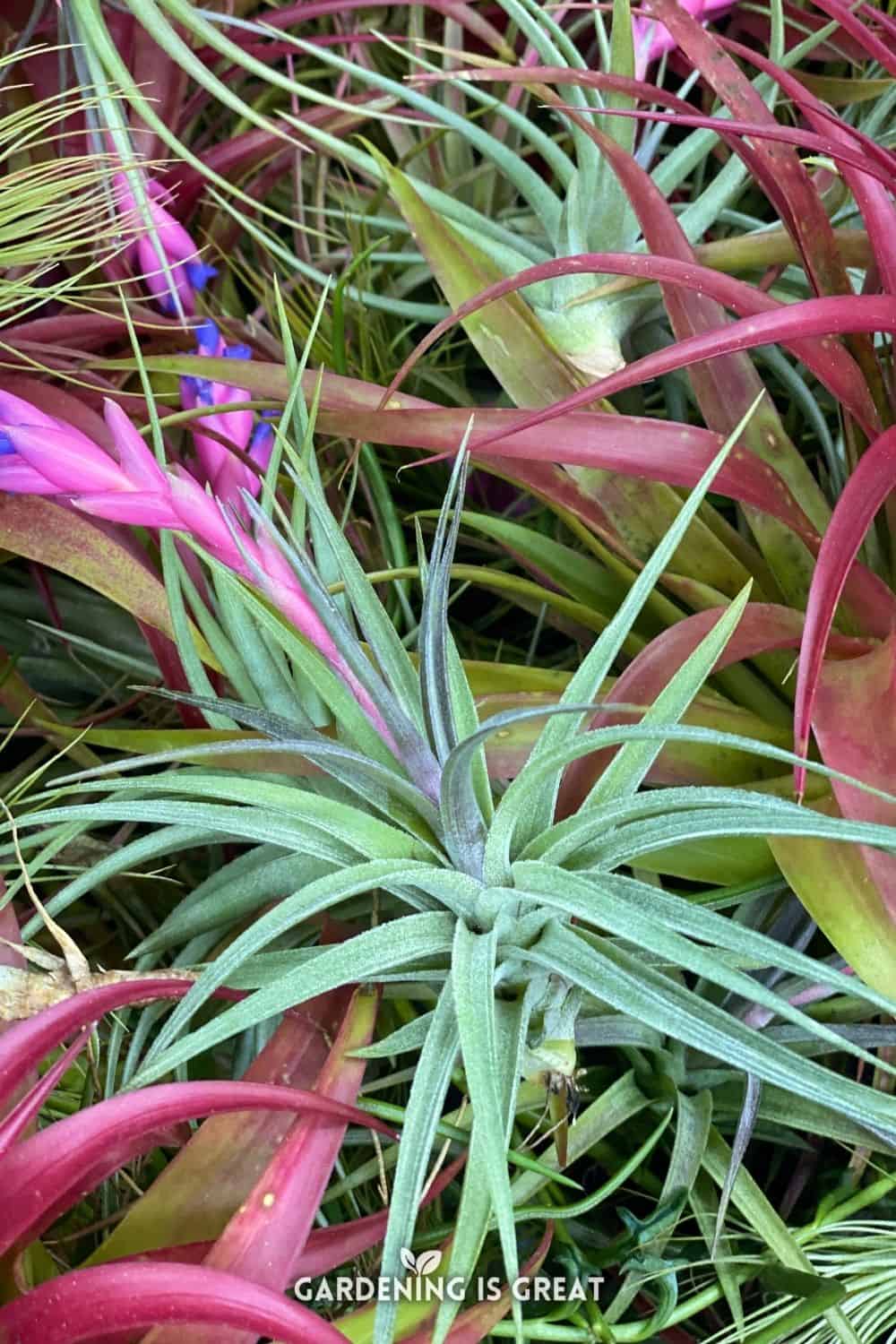How to Care for Air Plants
Air plants are fascinating. Many are amused with the fact these hearty little plants seem to survive on little more than the air we breathe.
This is of course not true and air plants do need more than the thin air to grow and thrive but they do not need soil and can usually go 5-10 days without water making them a very low maintenance houseplant with enough varieties to make any space interesting.
Learning how to care for air plants is easy.

This post contains affiliate links that earn me a commission at no additional cost to you.
What are Air Plants?
Air plants are a variety of plants called Tillandsias. There are over 600 types of air plants available. These are tropical plants similar to succulents but lacking the root system and nutritional needs of succulents.
Air plants are hard to kill and will grow well provided they are kept warm and given water from time to time. Air plants are tropical and need warm humid conditions to thrive.
They do not require direct sunlight, soil, or consistent maintenance making them a great option for the forgetful houseplant owner.
How do you Water Air Plants?
Despite their name of air plants, these houseplants do need more than air to survive. Air plants absorb the nutrients they need from the water. In the wild, this would come from rain but in or home you need to water your air plants
Air plants are unique as they will tell you if they are getting enough water. If your air plants are not getting enough water the levels will begin to turn brown and curl. If they are overwatered your air plant’s leaves will turn soggy and begin to brown. If your air plant has begun to run black has become lost beyond saving.
To water, your air plants dunk them in a bowl of water for about 10 minutes per week. If your home is humid you can reduce this to 1 once every 10 days.
In the winter, when your home’s air is dry water your air plants every 5 days to keep them from drying out. This is a great way to water your air plants if you have a lot of them in your collection. Just gather them up in a basket and set them in a bowl or sink for a swim before drying them and returning them to their homes or rotating them to never have the same look in your decor.
Be very careful that any varieties with a bulb are dried well to prevent them from rotting. Like other bulb plants, bulbous air plants are quick to rot when they get too wet.
Between waterings, if your pants look a bit parched but not quite showing signs of needing water you can gently mist them with water to revive their bright green color.
How do Air Plants Grow Without Soil?
Air plants will not grow in soil despite even your best efforts. Air plants are epiphytes and rather than growing in soil, they attach themselves to other plants, trees, rocks, and even walls rather than rooting in the ground.
Their lack of roots means they can not pick up nutrition from the soil like other plants. Planting them in soil can make them too wet to thrive and lead to your air plants rotting.
Do Air Plants Need Sunlight?
Yes, air plants need bright indirect light. Any room that has a sunny window will work perfectly. You do not even need to place the air plant in the window. Avoid direct sunlight or your air plants being directly hit by a grow light. This can lead to burning your air plants.
How to Grow Air Plants
Air plants are easy to care for and take relatively little work to help them survive. Provide them with water on a regular basis without waterlogging them and a sunny room for a plant that will live for years.
To propagate new air plants, you must harvest the pups your air plant grows. This is as simple as splitting the pup from the mother plant. A well-cared-for air plant will produce pups.
Air plants that flower will create pups after they flower, but air plants will only flower once. Pups are ready to be removed when they are about half the size of the mother plant.
Keeping your air plants warm is vital to keeping them healthy. These easy-to-grow tropical plants prefer to be between 5 and 90 degrees and thrive with a drop of up to about 10 degrees mimicking the nighttime temperature drops of their native climate.
To encourage blooming and pups use an air plant-specific or bromeliad fertilizer. These help to provide nitrogen that your water can not.
Be careful not to use regular fertilizers as these are not readily available for use by your air plants. You should fertilize your air plants a few times a year to encourage growth and blooms.

